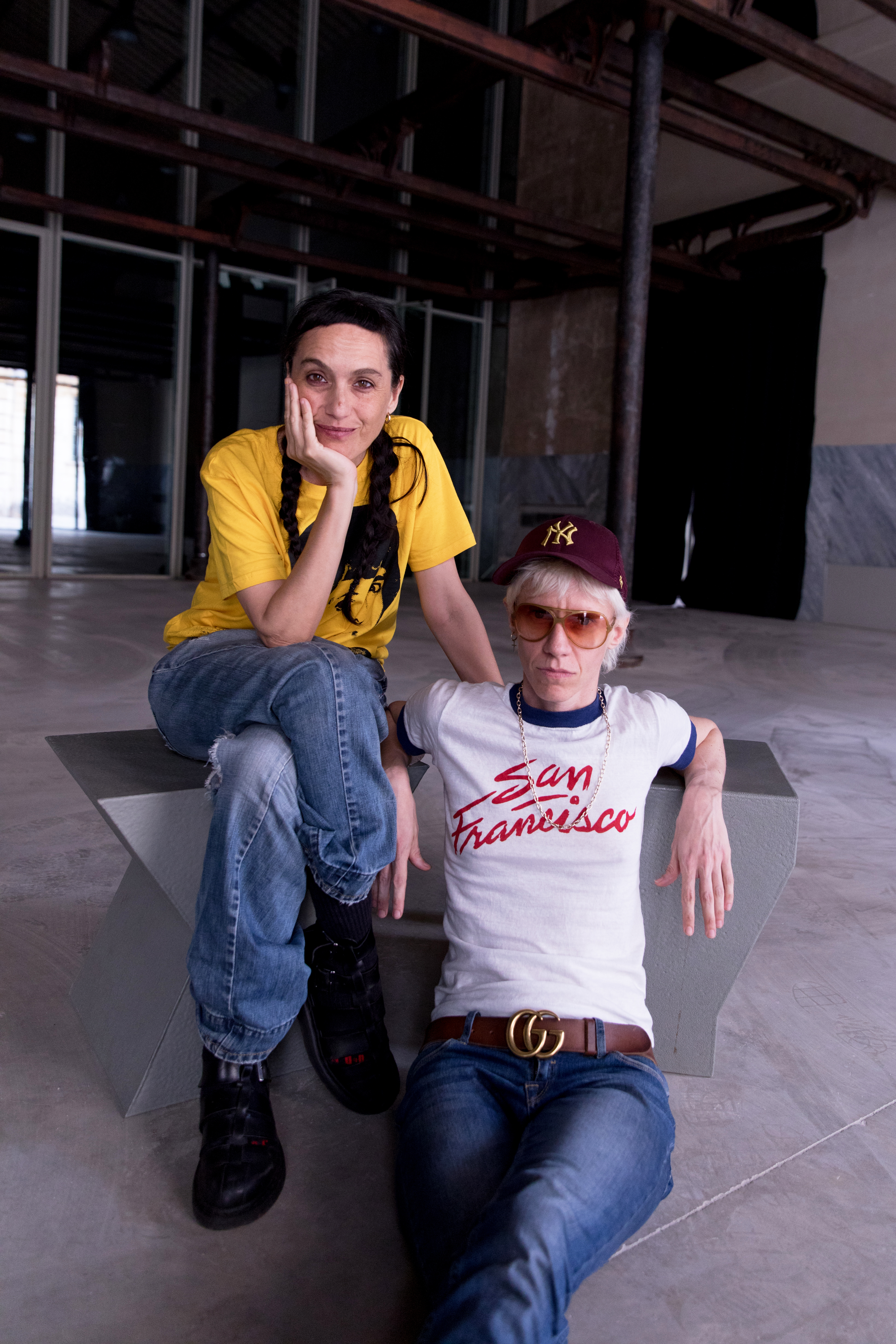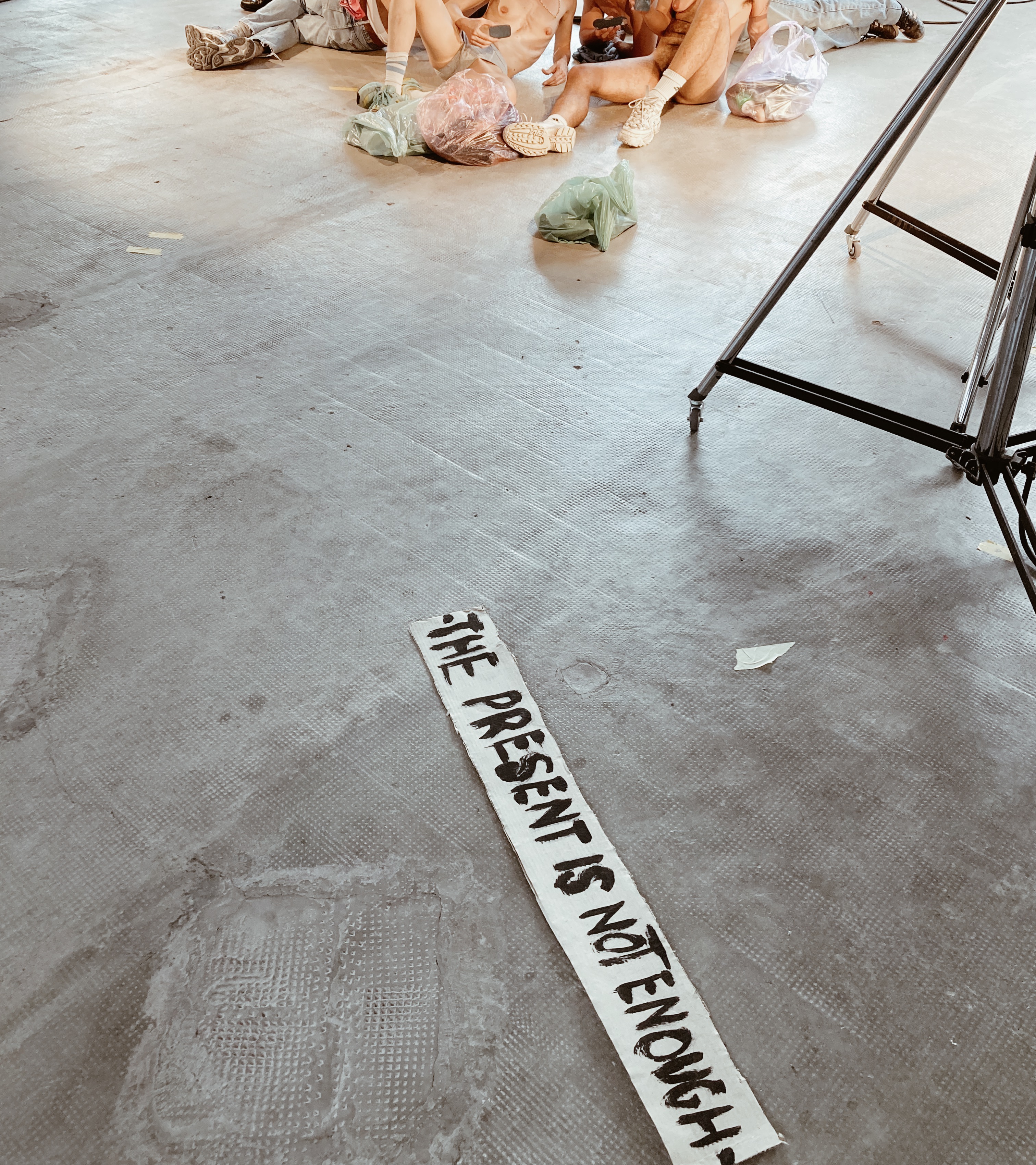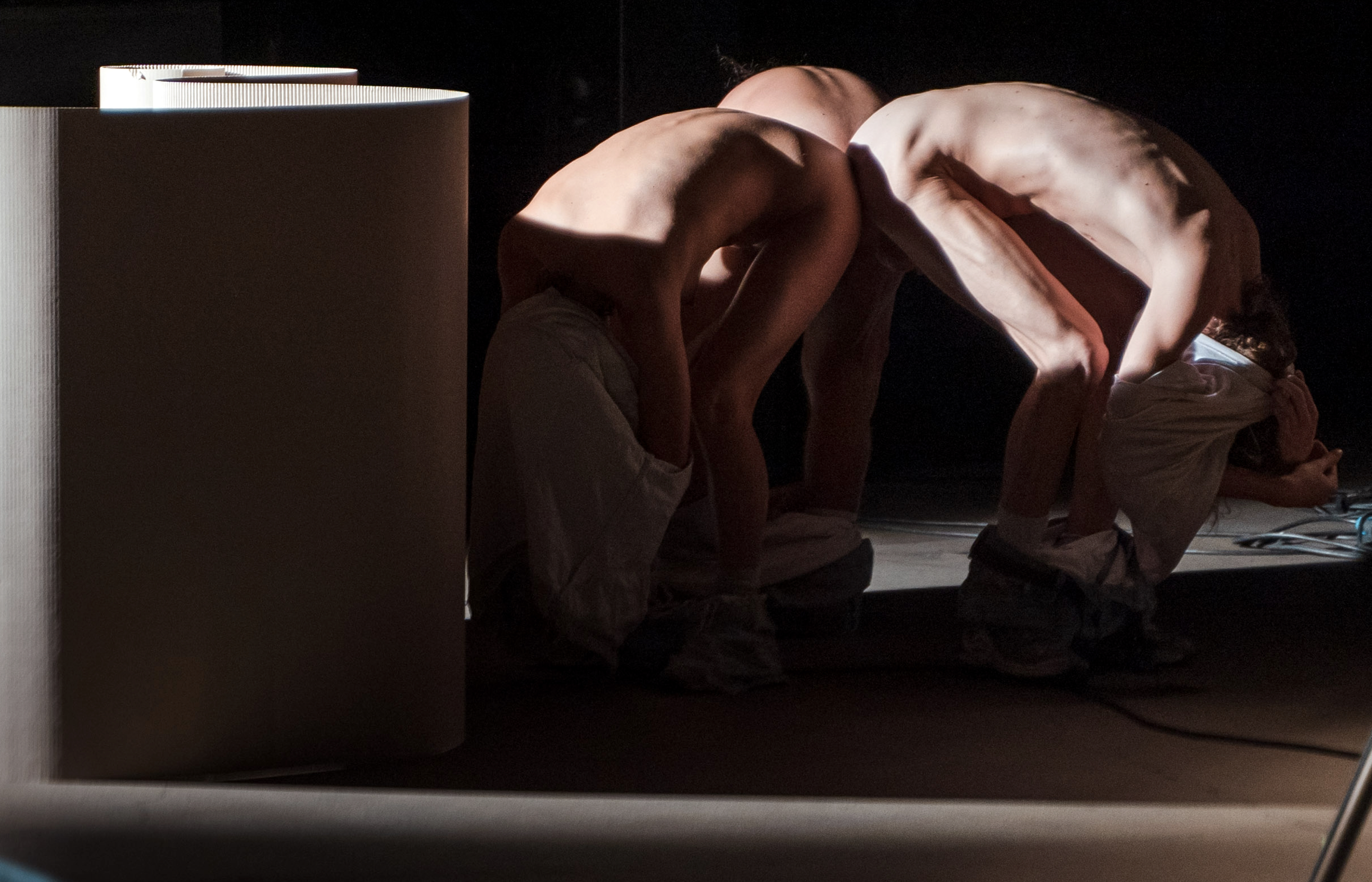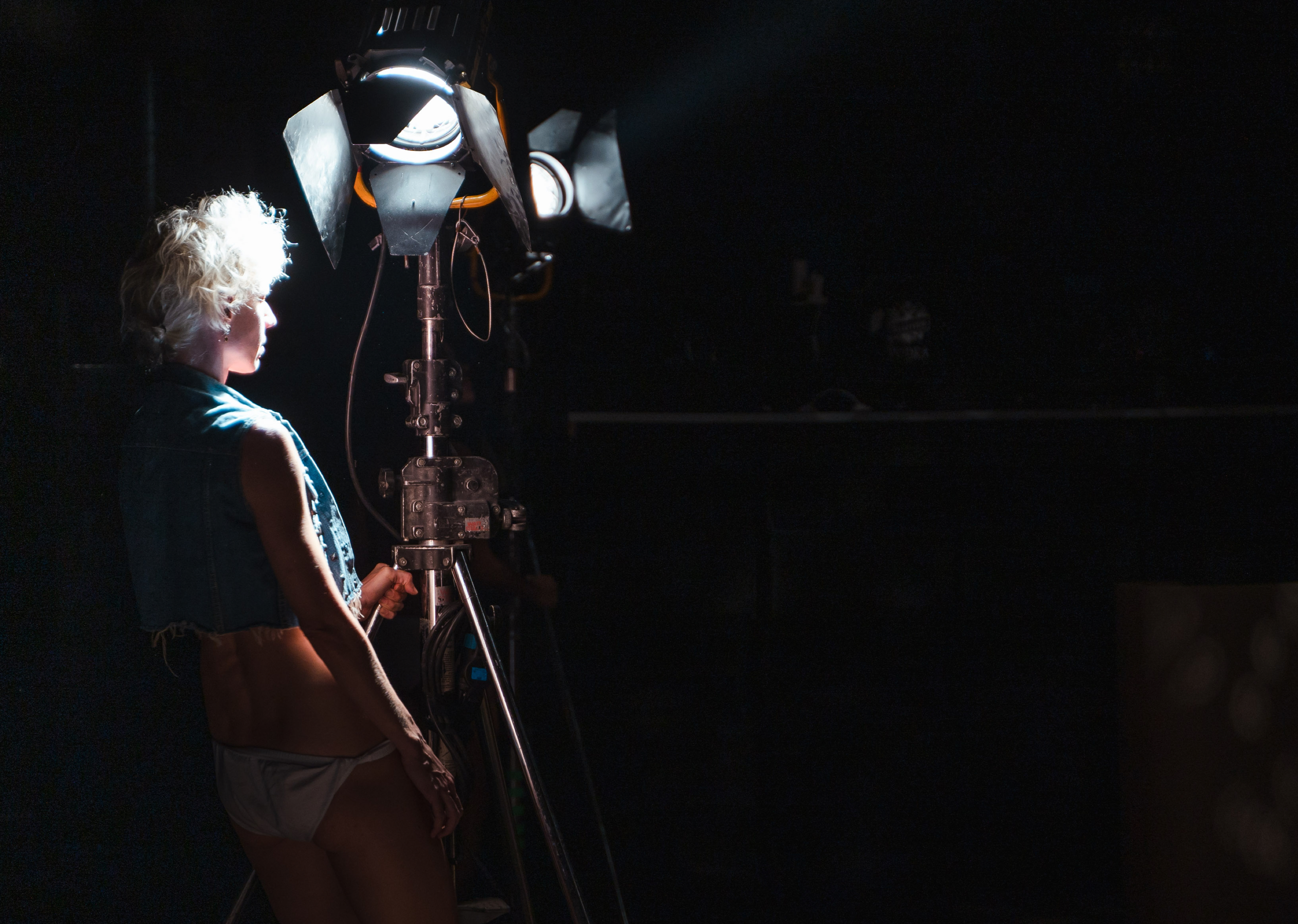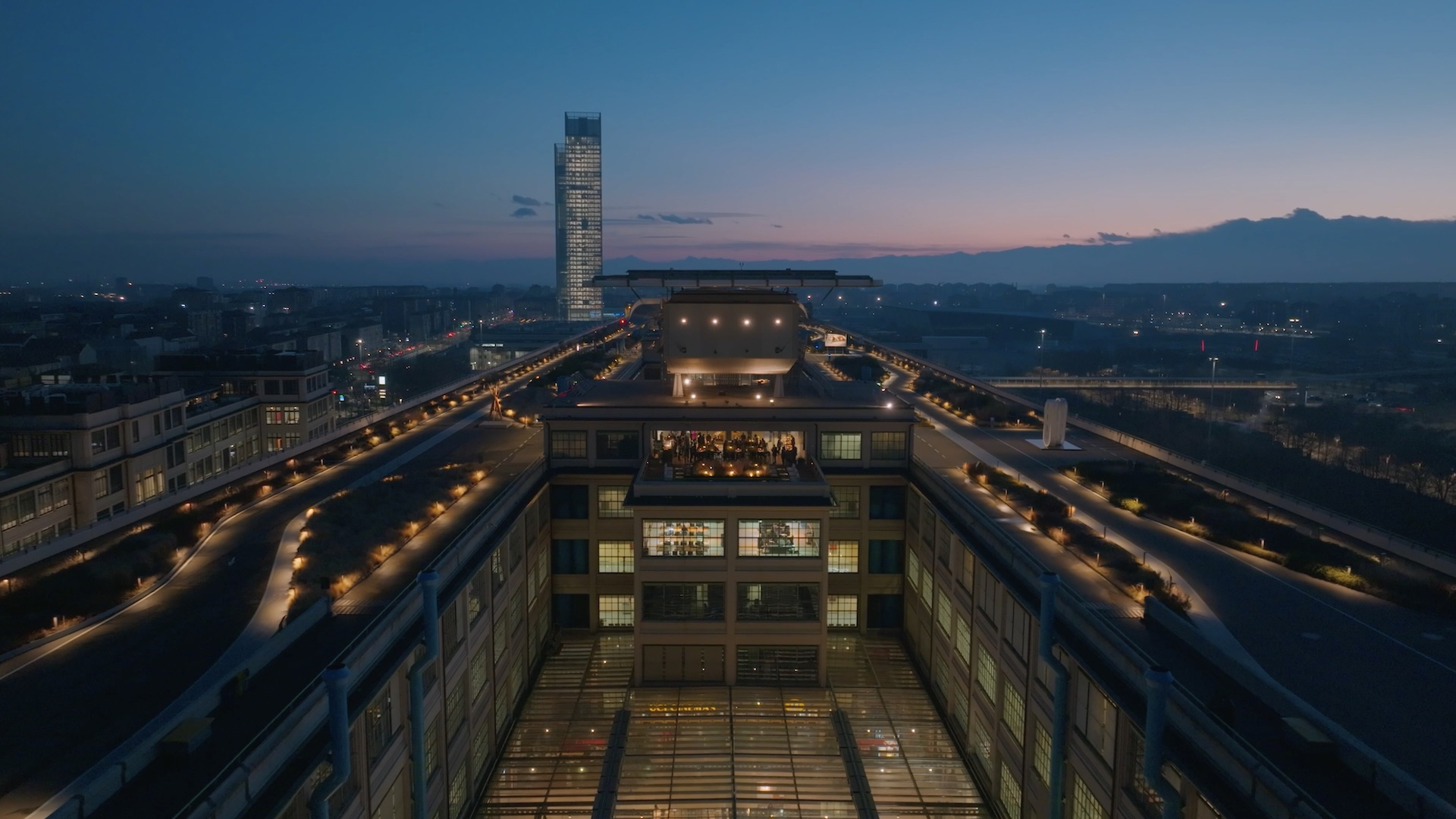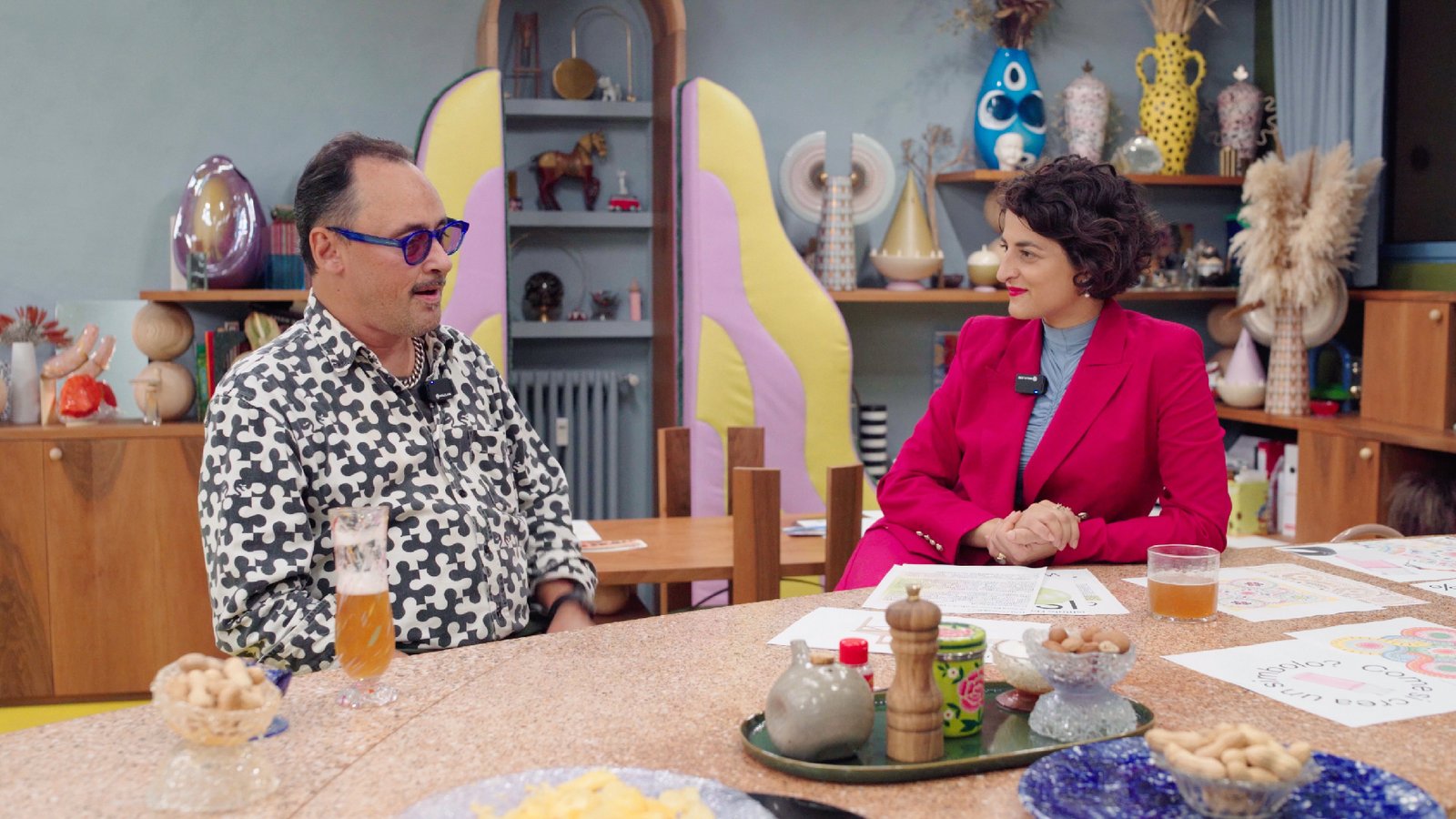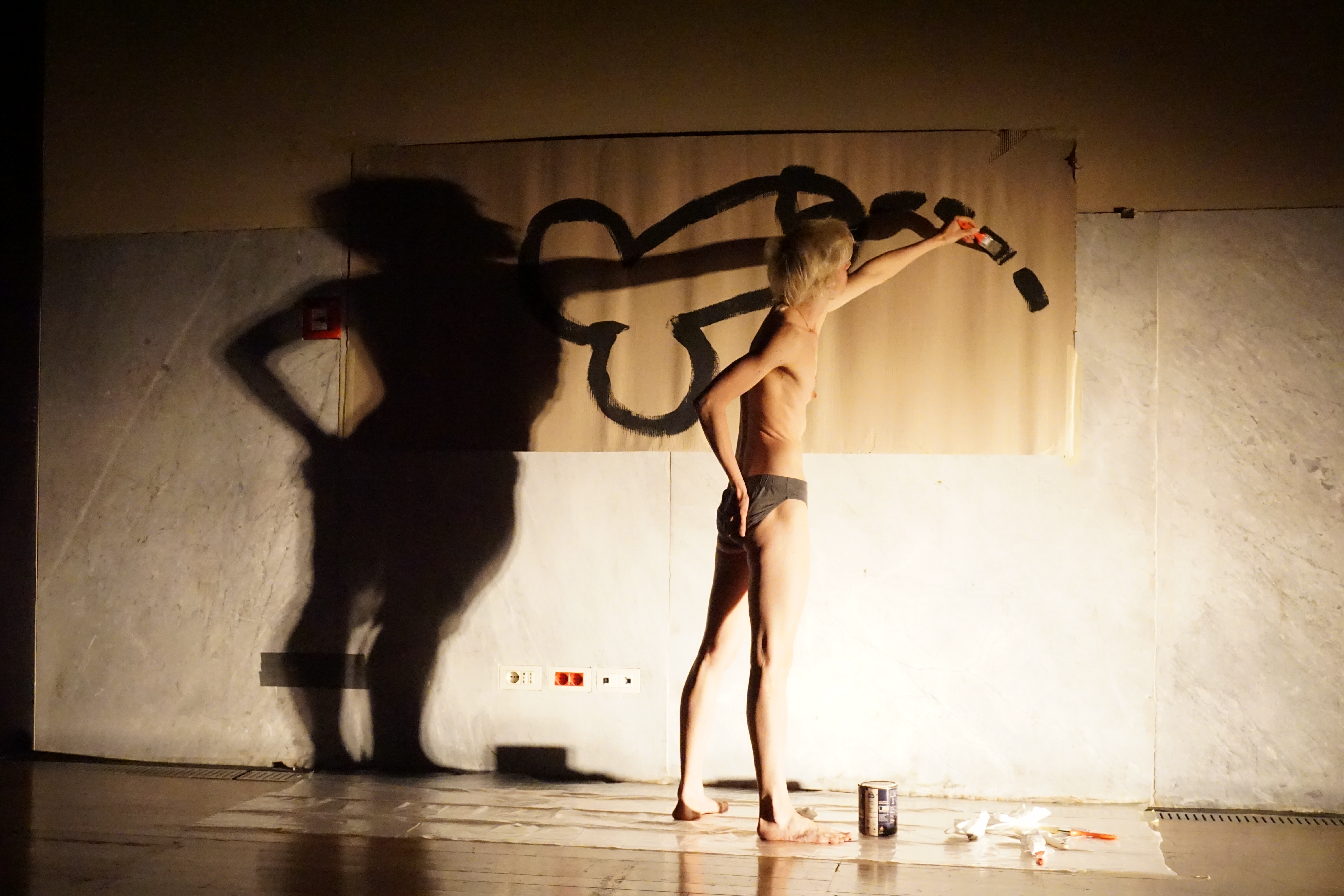
IDENTITY AND BODY
INTERVIEW WITH SILVIA CALDERONI
Actress and performer Silvia Calderoni is certainly one of the icons of contemporary theatre. With a keen eye for the body and its expression, she manages to explore the boundary between identity and performance, making the body itself a central element of her work. We delve into her career and her journey with this interview.
Alessio Vigni: I'd like to start from the beginning, from your origins, from Lugo di Romagna, where you were born. Who was Silvia Calderoni as a teenager?
Silvia Calderoni: I was born in Lugo, a small provincial town. We know that Italy is made up of provincial towns. Everyone comes from some tiny little place. Being provincial is truly one of the characteristics of our country. Lugo is also where I lived until I was twenty. My life was always the classic small-town life, but I was very into music, countercultures, and clothing. In Lugo, there's this big secondhand shop, where I used to rummage through clothes from other eras, creating these absurd looks for myself. I did athletics, so my path started with sports, and only later did I encounter the arts. I ran into theater by accident during school, through a workshop in high school. Until that moment, I wasn't interested at all. However, I was particularly lucky because, at that time, the school workshop was run by Teatrino Clandestino, a historic Romagna-based theater company. At the end of the 1980s, in those areas, within a forty-kilometer radius, you had Romeo Castellucci, Teatro delle Albe, Fanny & Alexander, Motus—it was all there.
 Silvia Calderoni Ph. Claudia Pajewski
Silvia Calderoni Ph. Claudia Pajewski
A.V. Besides the school workshops, did you pursue any specific theater training?
S.C.: You could say I started from practice and at some point found myself on stage. I didn’t attend schools, just a bit of training. I’m not one of those who says schools are bad. Absolutely not. Everyone understands on their own path what works for them and what doesn't. At that time, I wasn’t interested in going to school or taking courses in other cities, so I stayed in that area, which was rich in very interesting theatrical experiences. I learned the craft, a bit like painters did in the past, and I started working right away with important names like Teatro Valdoca or Monica Francia. In short, I was lucky to be born there.
A.V. Listening to your story, I find it fascinating how the body has always been central to your journey: first with the look, then with athletics and physical training, and later with theater. Was this more a matter of chance or a creative and expressive need?
S.C.: I believe that, for an adolescent, the creative urge coincides closely with the need to discover life, to live the world, to explore it. I had a great passion for music, a huge passion for the look, and all of this, in relation to what we talked about earlier, is very much tied to the body, to appearance. Clothing becomes body—it’s also an identity issue: body, identity, clothing, building an identity by working on your body, on appearance, on how we exist in the world, and parallelly, on art, on the stage. Then there’s the training part, the activities of maintaining and modifying the body, which have been a daily constant in my life. Even for the kind of theater I still do today, a highly performative theater, lots of training is required. Before performances, I go for a run, I train my voice, I do physical training, so it's a continuous activation.
A.V. Your career began with Valdoca and other significant encounters, and then Motus came along, the company you still work with today.
S.C. They were founded in Rimini in 1991, during that golden period in which I grew up. I’ve always been a fan of theirs, and if you frequented certain places, you'd see them at night in the clubs, or you'd spot them at Cocoricò. Motus was something ever-present. They were all recognizable, and when this group of incredible people arrived, you'd look at them and say, "Wow, I want to be one of them." Then it happened. I auditioned twice and didn’t get in, but eventually, that artistic bond was formed, and we’re still working together today. This year marks 20 years of collaboration. In the beginning, I was more connected to energy, so I was an energetic body, and I felt this great possibility of comfortably inhabiting the identity that I liked the most. I could maintain a certain kind of androgyny, and that was something I brought as material for stage writing. This gave me tremendous freedom and influenced how I lived my gender and sexual identity.
 MDSLX Motus © Simone Stanislai
MDSLX Motus © Simone Stanislai
A.V. After Motus, you started working with the Living Theatre.
S.C. Actually, my encounter with Living coincided with meeting Judith Malina, one of the three founders. We were in New York performing with Motus, and Judith came to see the show—it was a rewriting of Antigone, and I was playing Antigone. She had worked a lot on that character and was already 82 at the time. While I was warming up before the performance, I saw a name tag on a chair that said "Judith Malina." I was shocked. Panic. To me, she was a sacred monster. After the show, like a true fan, I went to greet her, and she said this line: “It would be nice to work together, you and me.” I didn’t think twice, and a few months later, we were in New York starting rehearsals. From that meeting, we created a performance where it was just her and me on stage. She was already quite old, and her body was slowly failing her, but her mind wasn’t. On stage, she was like a living archive, passing pieces of the Living Theatre's history to me, and I, live, with my body, would bring them back to the stage. Judith was fantastic, still fighting her battles. She was a revolutionary until the end, until her last breath. She met and lived with incredible people. Once, she told me about bailing Jim Morrison out of jail and how she thought Andy Warhol was unpleasant.
A.V. Then there’s your encounter with cinema. I'm particularly interested in how your collaboration with Alessandro Michele and Gus Van Sant for the Gucci-produced series came about.
S.C. I had already started collaborating with Alessandro several years earlier. He called me to participate in one of his shows. He’s a very curious person and a keen observer of life and theater. He loves theater, comes to see it often, and it’s one of his passions, so he knew me through my work. Then he asked me to collaborate on one of his shows. I had always wanted to do a fashion show with a capital “F,” and it was another amazing adrenaline rush. Over the years, I did other projects with him as well. Alessandro has this incredible ability not to design worlds, but to design people—he creates peoples. For me, he's on par with the great visual artists. He was the one who invited me to be part of this series, and it was a bold move to have me involved. I'm not mainstream, and I don’t fit into reassuring video standards, but we went beyond that. When I found out that Gus Van Sant would be directing, I was ecstatic because I grew up on his films. He’s always been one of my aesthetic references, especially because he’s infused a lot of performance art into his work. So, it was a really powerful experience, not just during filming but also because of the workshop-like atmosphere that was felt behind the scenes. I feel very lucky to have moments in my life that feel like dreams.
 Silvia Calderoni
Silvia Calderoni
A.V. Your artistic research is also centered around the challenge of pushing the limits of the body and identity. What does the body mean to you today? And do you think we've reached a deep understanding of this concept, or are we still far from it?
S.C. It’s a complex topic, but let’s give it a shot.
I’ll start by saying that I’m often asked if I consider the body a tool. I have to admit that I’m very far from that idea. For me, there’s a fundamental error in that statement: you can’t think of the body as a tool—it’s not a guitar, not a car; the body is us. We must reconnect with the bodies we have, even if they can be modified or even if we may not always recognize ourselves in them, but we have to coincide with them. You can’t think of the body as a tool for expression because that’s a very presumptuous idea—it implies that only certain people express themselves through this system. I’ve used my body a lot, sometimes recklessly, like it was a crash test dummy—I’ve broken it, thrown it on the ground, tested it. Now, maybe due to age, I’ve made peace with it. It’s become clearer that there’s no need to push it to the limit to feel it or make it felt. Still, it’s ironic that by not fitting into a standard, you end up creating a new one. I don’t fit into the traditional idea of a female body, or even a male one, but by moving beyond this binary system of imagination, I create a new model, one that others may not fit into either, and so it goes.
A.V. So, your personal identity and journey have always influenced your work? Or have you managed to separate them?
S.C. No, everything has always been intertwined. In certain moments of my artistic research, I’ve even made my private life a part of the dramaturgy. For example, with the work MDLSX, you enter my private life as part of the narrative. Even in my recent work, especially the research that Ilenia Caleo and I do together, like with The Present is Not Enough, the body is the dramaturgy. These are very experimental pieces where the bodies themselves are the absolute protagonists, and the bodies alone already constitute the writing. In Kiss, for example, the bodies are so present that they carve out their own space just by being there. There are no bodies that matter more than others—every body has equal value, even on stage. Able bodies, disabled bodies, bodies with different skin colors—this is still not taken for granted in the world we live in.
A.V. It seems that your personal experiences lead to a political reaction and resistance to what you lived through and are living through.
S.C.
Yeah, I had to read the words “f**king lesbian” written on the walls of my school. So, yes, my experiences have always influenced me. If you walk down the street dressed a certain way, at a certain time, in a certain environment, especially in small towns, you’re already making a political statement. It all comes down to the stance you take in the world, because when you see those words written about you, or when people want to hurt you on the street, of course at some point you get angry, and you use your body in a certain way and do theater in a certain way. That’s why I say it’s all intertwined; it can’t be any other way. You express yourself in a certain way, you have a certain fury in your body because it’s the same body they won’t let into certain places, the body that doesn’t fit the ideal, the one that disgusts people. I did this intense training from 18 to 28 years old, performing at Cocoricò, where I did entrance performances standing still in tableau vivants for four hours. There was only one rule: people couldn’t touch me, but I could hear what they said. A lot of times, I was completely naked, so one of the main topics of conversation was my body. And for ten years, I heard things like: “That’s disgusting!” “What is that? Is it a man or a woman?” “Look, no breasts! Wait, does it have a penis? Oh no, it doesn’t.” Over and over again for hours. As if I couldn’t hear them. And all of this was happening before there was widespread circulation of theories, before Presiado’s books, and before we really understood what “queer” meant. I was queer, but we didn’t even have that word yet.
A.V. Let’s wrap up by talking about your book Denti di Latte, published this year by Fandango Libri. You always point out that it’s not a biography, but while reading it, it seems like you had to dive into your personal archives of childhood and confront your past. Why did you feel the need to move into this kind of writing?
S.C. Exactly, I went into that big warehouse of archives and memories and pulled out some pieces. I wrote it during the COVID period, an experience we all went through that made us go back into the warehouses of our memories and reopen boxes we hadn’t had time to look at before. I took some parts of that and mixed them with fantasy. I treated writing the way I behave on stage. I changed the medium because with COVID, we couldn’t be on stage that year, so I did the same work, but chose the novel as the expressive form. I approached it compositionally the way I approach stage work. I’ve definitely opened a new creative path that was already within me in other forms, and I’m sure I’ll carry it forward. It was a solitary creative act, and I’d love to do it again—I had fun.
A.V. One last question about the future. What’s next for you?
S.C. I was recently appointed to the artistic direction of Short Theatre in Rome, a collective direction that I’ll share with Ilenia Caleo, Michele Di Stefano, and Silvio Bottiroli. I wouldn’t have done it alone; I’m not a curator by nature, so I love the idea of working collectively to create different models. On top of that, there are new projects with Ilenia, residencies, and we’ll continue touring the works we’ve already done. In March, I’ll also be teaching a course at IUAV in Venice. Lots of things with new inspirations.
Cover image: Silvia Calderoni Ph Ilenia Caleo
Alessio Vigni, born in 1994. He designs, edits, writes and deals with contemporary art and culture.
He collaborates with important museums, art fairs and artistic organisations. As an independent curator, he works mainly with emerging artists. He recently curated “Warm waters” (Rome, 2025), “SNITCH Vol.2” (Verona, 2024) and the exhibition “Empathic Dialogues” (Milan, 2024). His curatorial practice explores the relationship between the human body and the social relationships of contemporary man.
He writes for several specialised magazines and is author of art catalogues and podcasts. For Psicografici Editore he is co-author of SNITCH. Dentro la trappola (Rome, 2023). Since 2024 he has been a member of the Advisory Board of (un)fair.
